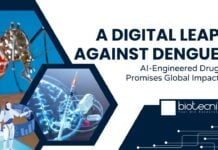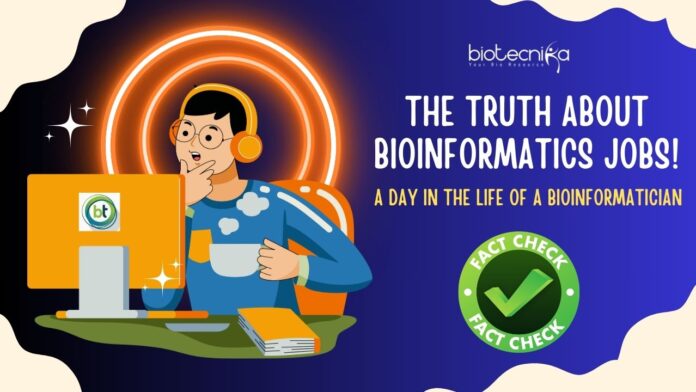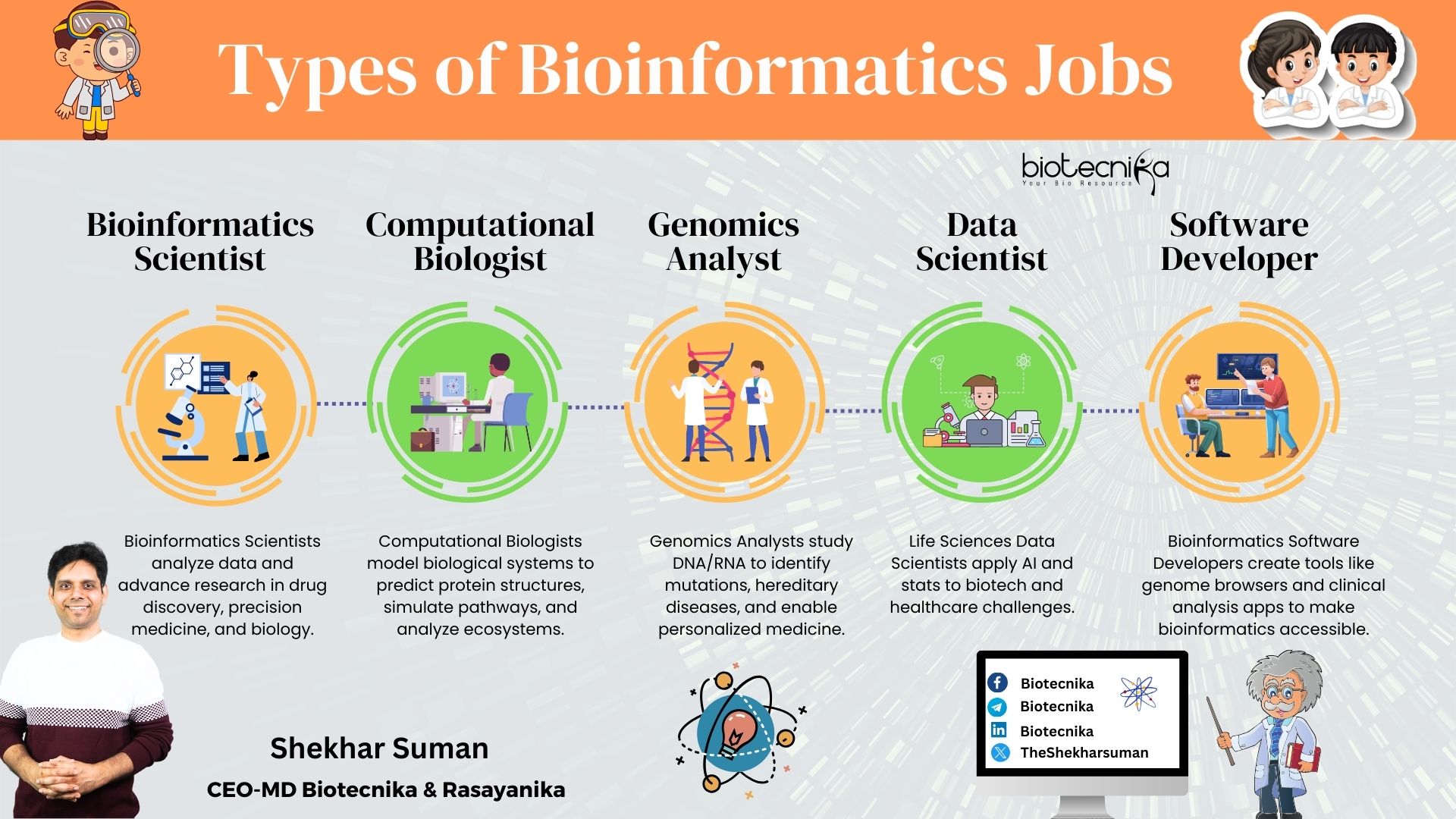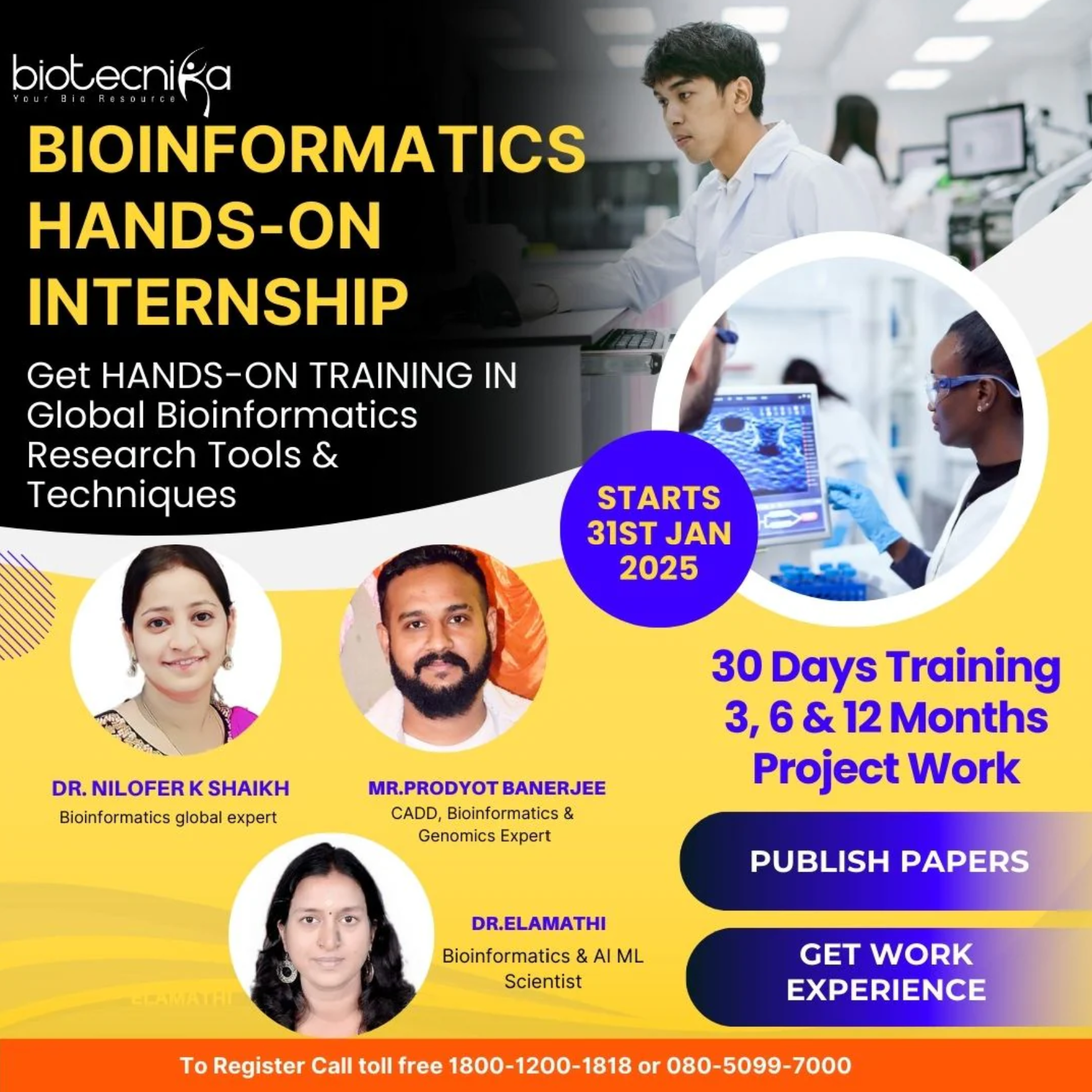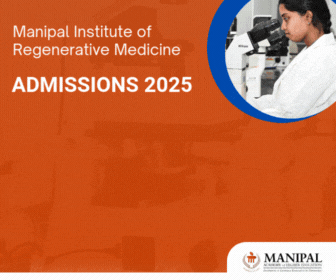What Bioinformatics Jobs Are Really Like? Let’s Find Out The Truth
A Day in the life of a Bioinformatics professional
Maya, a recent bioinformatics graduate, was overwhelmed by job rejections and self-doubt. The field of bioinformatics can be tough to break into. One evening, she saw a job post for a junior bioinformatics analyst on LinkedIn. She applied for that job position, highlighting her internships and research, and weeks later, she got the call.
On her first day, staring at real genomic data, she felt both nervous and exhilarated. Maya soon realized bioinformatics isn’t about knowing everything; it’s about embracing challenges and contributing to larger, meaningful projects. Her story mirrors the experiences of many professionals in the field. So, let’s explore what exactly are bioinformatics jobs really like?
Types of Bioinformatician Jobs
- Bioinformatics Scientist – A bioinformatics scientist attempts to answer and solve biology-related questions and problems using technological research methods. They are specifically involved in cutting-edge research in areas such as drug discovery, precision medicine, or evolutionary biology. Their work often bridges theoretical computation and practical biology.
- Computational Biologists – Computational biology and bioinformatics are two interrelated disciplines that hold a significant role in analyzing and interpreting biological data. It essentially involves the application of data analytics methods, mathematical modeling, and computational simulation techniques to study biological, ecological, behavioral, and social systems.
- Genomics Analyst – A genomics analyst specializes in working with DNA and RNA data. They work on identifying genetic mutations, studying hereditary diseases, and supporting personalized medicine by tailoring treatments to an individual’s genetic makeup. Throughout the entire process of developing genomes-based cancer therapies bioinformatics is involved. For example, bioinformatics is used to analyze the sequence and any related molecular data to determine precise genetic differences present within the sample genome.
- Data Scientist (Life Sciences):
These professionals apply advanced statistical techniques and machine learning models to solve complex problems in biotechnology and healthcare, such as predicting drug efficacy or detecting biomarkers in clinical data. - Software Developer (Bioinformatics):
These developers focus on building software tools, such as genome browsers, data visualization platforms, or applications for real-time clinical analysis. Their work ensures that bioinformatics methods are accessible and scalable.
A Day in the Life of Bioinformaticians
Now that we’ve looked at the different types of bioinformatics jobs, let’s take a closer look at what a typical day might involve. The daily activities of a bioinformatician depend on their role, but some tasks are common across the field.
- Data Analysis and Programming – Bioinformaticians spend most of their day analyzing biological datasets using programming languages such as Python, R, and Perl. With the help of computational capabilities, algorithms can process vast amounts of genomics, proteomics, and other biological data, enabling researchers to gain valuable insights into complex biological systems.
- Collaboration with Biologists – Bioinformatics is inherently interdisciplinary. Bioinformaticians often meet with biologists, geneticists, or medical researchers to understand the context of the data and translate results into actionable insights. For instance, they might explain how a specific gene variant could be related to a disease or guide experimental designs based on computational predictions.
- Developing Tools and Pipelines – Many Bioinformaticians design tools and software to automate repetitive tasks. For example, they might develop scripts to process high-throughput sequencing data efficiently or design user-friendly interfaces for biologists with limited coding experience.
- Meeting and Reports – Writing clear and concise reports is equally important, especially when summarizing complex data for non-technical stakeholders like funding agencies or project managers. Beyond technical tasks and challenges, bioinformaticians often have meetings to discuss project goals, troubleshoot challenges, or present findings.
- Problem-Solving – Every dataset brings unique challenges, whether it’s managing incomplete data, optimizing slow algorithms, or interpreting unexpected results. Bioinformaticians frequently brainstorm and test new approaches to overcome these obstacles.
Skills Required
- Programming Languages – Bioinformatics creates huge quantities of data, and programming gives the means to analyze and interpret that data. Programming can automate repetitive operations, saving time and reducing human mistakes. Proficient in programming languages such as C++, Java, Python, R, and Perl. Experienced with databases like SQL and cloud computing is often a plus point.
- Statistical Expertise – Skill in hypothesis testing, Bayesian inference, and multivariate analysis are particularly valuable in making sense of experimental results. Understanding statistical concepts is critical for analyzing biological data.
- Biological knowledge – It is a basic foundation for understanding molecular biology, genetics, and biochemistry that helps you to connect computational findings to biological phenomena. For example, knowing how transcription factors work is important when analyzing gene regulatory networks.
- Problem-Solving Skills – Thinking outside the box often leads to breakthroughs. Problem skills are important in every career at every level. Creativity and persistence are key when dealing with incomplete datasets, unexpected results, or software bugs.
- Communication Skills – Effective communication ensures that their work drives actionable decisions. Bioinformaticians need to explain their findings to biologists, clinicians, or executives who are from non-technical backgrounds.
Challenges in the Field
While the bioinformatics field is full of exciting opportunities, it also comes with its share of challenges.
- Overloaded Data – Genomic sequencing technologies generate enormous datasets that can be overwhelming to process and store. Handling this deluge of information requires efficient computational solutions and a strong understanding of data management.
- Constant learning – Bioinformaticians must stay updated through online workshops, courses, and reading scientific literature to stay updated. The tools, technologies, and algorithms used in bioinformatics evolve rapidly.
- Interdisciplinary Nature – Bioinformaticians must be adept at switching between programming and understanding complex biological concepts. Balancing expertise between biology and computing is demanding.
- Project Deadlines – The pressure to meet tight deadlines, especially in industry roles,
can be stressful. Delivering high-quality analyses within a limited timeframe requires excellent time management and organizational skills.
Despite all the challenges, the bioinformatic field is full of rewards, such as groundbreaking discovery, high demands, diverse opportunities, and endless opportunities to tackle challenging problems, learn new skills, and innovate.
For anyone aspiring to a career in bioinformatics, Maya’s story serves as a reminder: the path may be challenging, but the rewards are extraordinary. Whether coding through the night or navigating the complexities of interdisciplinary work, every effort brings you closer to meaningful impact. The field of bioinformatics is waiting for your unique contribution. Keep going.
Get hands-on Training | Work in Projects | Publish Papers | Get Work Experience Letter
Talk to a Bioinformatics Expert NOW
Call 1800-1200-1818 or 080-5099-7000 for details
What Bioinformatics Jobs Are Really Like?




